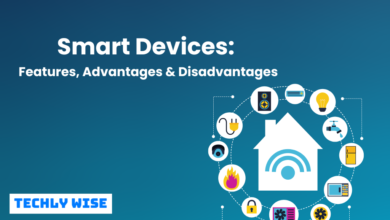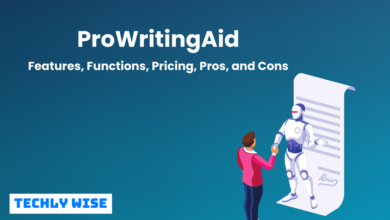
A software development approach called Low-Code development enables developers to create applications more quickly and without extensive coding. Low-Code Development Platforms can be tailored using this technique to meet the particular needs of a business. Low code development, especially for companies that frequently struggle to adopt new technology, can greatly speed up the digitalization process for enterprises.
Let’s now examine some of the top Low-Code Development Platforms for small and medium-sized enterprises.
Types of Low-Code Development Platforms
Market vendors offer a plethora of low-code application development platforms. To make things simpler for you, we’ve created a list of some of the top low-code development platforms.
OutSystems
One of the leading minimal code development platforms in use today is OutSystems. The platform is also well-equipped with a variety of top-notch tools and features that are intended to assist organizations in creating applications that are tailored specifically to their needs.
The OutSystems developers pack in a lot more than just real-time reporting capabilities that offer comprehensive access control and permission management, such as scalable APIs, native support, DevOps automation, monitoring, and quick deployments of mobile applications. Depending on the size and scope of the business, it provides three programs, one of which is a free trial option.
Features of OutSystems
- You will have error-free app deployment, whether in the cloud or on-premises.
- Offers your apps the most recent security.
- Any system could be integrated with your applications.
- Performance dashboards in real-time are available.
- You’ll be able to offer scalable applications.
Appian
Businesses may design and develop their applications using APIs, templates, and preset interfaces thanks to Appian’s robust minimal code development platform. Appian developers can create an app in just three minutes, making it ideal for people with little to no technical experience.
Beautiful apps can be created using preset interfaces, adaptable templates, and easy-to-configure APIs of the Appian minimal code development platform. Furthermore, its low-code platform has superb case management features and first-rate security.
Features of Appian
- Drag-and-drop features.
- It provides services for native AI.
- It also provides no-code connections with the AI/ML platforms from Google Cloud, Amazon AWS, and Microsoft Azure.
- You won’t need to write any code to link company data, systems, and web services.
ServiceNow
The ServiceNow low code development platform is a leader in the field and well-known for its excellent and user-friendly products. Forrester Wave: Low-Code Development Platforms for Professional Developers, Q2 2021 recently recognized the business as a Leader.
The platform gives ServiceNow developers all the cutting-edge tools they need to build robust, purpose-built applications faster. Utilizing components like knowledge management tools, service portals, etc., also expedites the designing and implementation of specialized solutions with the app.
Additionally, the ServiceNow low code development platform includes an app engine process automation tool that streamlines the automation of workflows and produces results quickly.
Features of ServiceNow
- Offers a collaborative setting for programmers of all skill levels to work on apps across departments without requiring IT to take over platform management and control.
- Provides customizable platforms, infrastructure, and apps with hundreds of connecting points with little to no coding.
Salesforce Lightning
The market’s simplest and fastest low-code development platform is Salesforce Lightning. The platform guarantees to provide businesses with all the tools required to design, build, and release cutting-edge apps that are strong and entirely tailored to meet the particular requirements of each organization.
Designed to empower developers, the Salesforce Lightning platform offers a variety of advantages, such as quicker deployment, appealing visual interfaces, and simple setups & updates.
Features of Salesforce Lightning
- Using No-Code Builders, making mobile apps will be straightforward.
- Lightning Process Builder can be used to construct intricate workflows.
- You can quickly construct an app from a spreadsheet.
Zoho Creator
The Zoho Creator is yet another top-notch low-code development tool for quickly developing and launching customized applications. Developers may take advantage of a wide range of features, such as inventory and order administration, reporting, etc., with Zoho Creator. The platform has high-security standards, is user-friendly for developers, is inexpensive, and has all of these features.
Along with its three plan options, the low-code platform Zoho Creators also provides a free trial, and its pricing is comparably more affordable than that of the majority of other low-code application development platforms. As a result, it offers the ideal answer for businesses with a tight budget while enabling them to construct their unique software quickly.
Features of Zoho Creator
- You can produce more applications with less work.
- Produce incisive reports.
- Connect your company’s data, and promote cooperation.
- Obtain immediate access to mobile apps.
- Unwavering security.
Web.com
You can create a website without learning how to code using the resources provided by Web.com. In which you receive 100 templates, each of which has a selection of themes and layout design possibilities and is arranged according to industry. You can easily add or remove pieces from your website using the drag-and-drop builder.
The automatic backup and site restoration tools of Web.com automatically safeguard data on websites. Additionally, it functions with the most widely used content management systems, including WordPress. You can get in touch with one of their specialists right away if you still need assistance building a website on Web.com; they will construct the site from the ground up on your behalf.
Features of Web.com
- The ability to automatically restore a site.
- Establishing and maintaining an online store.
- Editor with Drag and Drop.
- Individualized Templates.
- Domain for free with a plan.
Read Decoding DevOps: Its Concept, Functionality, and Methodology.
Microsoft Power Applications
You may quickly and simply design unique business apps using Microsoft PowerApps. The service has outstanding functionality, largely because it has pre-made artificial intelligence components. Another appealing feature is extensibility, which offers over 200 interfaces for combining disparate data and systems.
Features of Microsoft Power Apps
- Designing apps using a point-and-click interface.
- Simple application-to-data communication.
- Predefined templates are available.
- Web-based applications for tablets and smartphones running Android, iOS, and Windows will be possible for you to create.
Kissflow
Kissflow refers to itself as a “unified digital workplace.” Its major objective is to assist you in managing your workflow and processes.
A rule-based paradigm eliminates the requirement for custom coding and enables process customization by allowing you to add scenarios. Since it is a fundamental component of low-code development, Kissflow thrives on it.
Features of Kissflow
- It eliminates the requirement for coding.
- Tasks and logic can also be created using the drag-and-drop capability.
- You may use it to digitize your forms and requests as well.
- Drag and drop is an option for adding and editing fields.
Mendix
Mendix makes it possible to build a wide range of apps, from quick time-saving solutions to enterprise-grade tools that improve company operations. The differences between Outsystems and Mendix are listed below.
Anyone may utilize our low-code platform to grow their business by offering high-quality apps without having to deal with challenging coding. With the help of this app development platform, you can swiftly release and be successful with impacting apps.
Features of Mendix
- Flexibility in project management.
- Tools for visual modeling.
- Reusing components is possible.
Retool
Retooling is the quickest way to produce internal tools. Program with a visual UI that connects to any database or API. To change how your app looks and function, switch to code almost anywhere. Retool enables you to release more apps and expand your business more quickly.
To improve internal procedures, thousands of teams at organizations like Amazon, DoorDash, Peloton, and Brex interact around specifically designed Retool apps.
Features of Retool
- Options include self-hosting and the cloud.
- Quickly create front ends with more than 50 drag-and-drop components.
- You can connect to anything using REST or GraphQL API.
- A wide range of well-known data sources are integrated.
- Secure applications with audit logs, SAML SSO, fine-grained access controls, and 2FA.
- Write JavaScript wherever you want to completely customize your app.
Low Code Platforms Use Cases
Development with low code is advantageous for several reasons. Here are a few examples of the kinds of things you can create with low-code and no-code platforms.
Apps for Mobile Devices
Businesses must recognize that they now operate in a world where digital technology rules. Business-to-consumer (B2C) mobile apps can increase brand awareness and customer experience.
Undoubtedly, creating a smartphone app is difficult. Low-code development, though, makes it conceivable. Insurance firm VGZ Cooperative created a mobile app for its clients using the well-known low-code platform Mendix.
Microservices
Monolithic apps are rapidly being replaced with microservices. Based on ideas like loose coupling and service orientation, microservices have a strong case. In 2017, 62% of firms used or intended to use microservices. But transitioning is challenging.
Low-Code Development Platforms can speed up this process considerably. You can rebuild the architecture of your application using enterprise capabilities and high-impact functionalities found in Low-Code Development Platforms.
Customized Apps
The most difficult problem most businesses face is not often reaching out to customers but rather overcoming internal barriers. LCDPs are a great tool for developing internal workflows. The department currently oversees around 20,000 state assets with a tailored program that took only two months to develop.
Data Science
People are less inclined to acknowledge that statistics play a bigger role in daily life than they assume. It’s the lone factor that sets skilled business intelligence apart from good intuition.
Generic software isn’t always adaptable enough to support every data-related operation your business needs. Low-Code Development Platforms are useful in these circumstances. VisionX is a high-performance low-code tool with data engineering abilities. Applications for the LCDP include asset management, quantum computer configuration, and fleet management for ski resort vehicles.
Advantages of Low-Code or No-Code Development Platforms
Increased Productivity:
No-code platforms allow you to produce more apps faster. Because you don’t need to write a lot of code and have various options for task automation, you can create apps in a matter of days.
Business Agility:
These platforms give you the ability to create dynamic apps that function on a variety of platforms and devices. Users may efficiently access and use data from anywhere at any time.
Successful Governance:
Regulations regularly change, which makes it challenging for firms to remain competitive. Low-Code Development Platforms can help you achieve and adhere to these standards so that you can avoid risks.
Cost-Effectiveness:
Low-code development platforms take advantage of pre-designed user interfaces. Overall, it is less expensive to code and create all the essentials. Additionally, it lessens the need for additional developers, which saves money in other ways.




